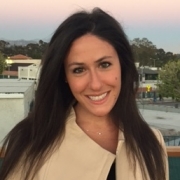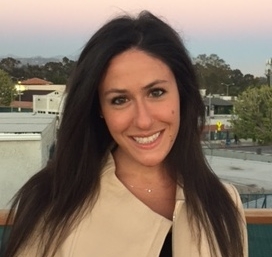
Credit: Getty Images via Inc.com
By Sarah Gavish, UCLA Master of Social Science ‘18
In an era where adult Americans consume 12+ hours of media per day, the relationship between media and public perception has never been more complex – or fascinating. Does media actually have potential to shape our perceptions? If it does, how, and why? Some studies claim that the news media is responsible for stoking our greatest fears. I interrogated this claim, as well as existing literature and research methodologies, with the following questions:
- To what extent do Americans consume news media that caters to their fears?
- What are the factors that may influence this relationship?
My investigation began by looking at the top 10 fears in America as reported by Chapman University’s Survey of American Fears in 2017, a random sample of the fears and anxieties of the US population. The ranking top 10 are listed below listed below:
- Corrupted government officials
- American Healthcare act/Trumpcare
- Pollution of Oceans, Rivers and Lakes
- Pollution of Drinking Water
- Not having enough money for the future
- High Medical Bills
- The US will be involved in another World War
- Global Warming & Climate Change
- North Korea using weapons
- Air Pollution
I examined the relationship between these fears and news consumption habits, considering individual consumption of three of the top news networks in the United States: MSNBC, Fox News and CNN. Immediately I found that higher levels of fear of the Survey’s top 10 were associated with higher consumption of MSNBC and CNN, while lower levels of fear of these topics were associated with higher consumption of Fox News. To me, this very interesting finding begged further investigation.
Let’s consider timing: The 2017 Survey of American Fears was deployed and compiled in June of 2017, within six months of Donald Trump’s inauguration. Perhaps unsurprisingly, conservatives and Republicans watch more Fox News, while liberals and Democrats watch more MSNBC and CNN. With that in mind, the study yielded two additional relevant findings: conservatives and Republicans (who watch more Fox News) say that they have little to no fear of the top 10 issues. Liberals and Democrats on the other hand – who watch more MSNBC and CNN – say they are afraid or very afraid of all of these things.
What we can determine, then, is this simple idea: both the news media and our fears are not only politicized, they’re partisan.
It is important to note that conservatives and Republicans are not necessarily without fears altogether, is it simply that the top 10 fears in America in 2017 more closely mirror those of liberals and Democrats.. Further research might dive more deeply into the Survey’s sampling methods, or the sample population’s characteristics to understand if there were other socioeconomic or influencing factors pointing to specific fears, beyond political leanings.
I would hypothesize that there is an entirely separate set of politicized fears held by conservatives that are in turn stoked by the programming they regularly watch – namely, FOX News.
The screaming presence of division across party lines in our media and our fears is no coincidence, especially if you consider the content put out by these networks. Using keywords from the daily News Minute put out by the Associated Press and UCLA’s NewsScape database, I found that CNN, which bears a significant audience overlap with MSNBC, showed the most coverage of the top 10 fear topics. Fox News showed far less and, in some cases, the least.
I consider the results of my research a sincere call to action for conscious news consumption. The “fact” of the matter is, if you watch, read, or listen to the same news sources all the time, it is very likely that you’re operating in a political echochamber of your own thoughts and fears. It is important as individuals and as a society to recognize that our fears can be shaped by the news we consume, and that the news we consume is often airing topical programming that caters directly to our fears.
 Sarah Gavish is a social scientist interested in solving humanity’s problems through conversation, collaboration, and an eventual upheaval of unquestionably flawed cultural institutions. She also likes to meditate, cook, argue, and read books. Sarah is not on social media and is happy to explain why (you shouldn’t be either) if you email her.
Sarah Gavish is a social scientist interested in solving humanity’s problems through conversation, collaboration, and an eventual upheaval of unquestionably flawed cultural institutions. She also likes to meditate, cook, argue, and read books. Sarah is not on social media and is happy to explain why (you shouldn’t be either) if you email her.




